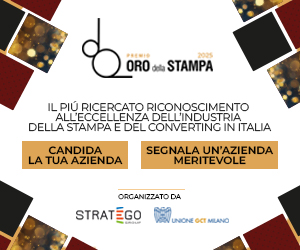Each label is printed with a non-reproduceable, completely unique mark.
The mark is associated with the individual product like a digital fingerprint that can be verified via smartphone. It’s called Six True, and it was created by a pool of concerns along with the contribution of De Rossi Vittoriano.
It’s an anti-tampering system that is impossible to falsify, easy and economical to implement and, most importantly, designed to be used by consumers. It’s called True Six, like the concern that manages it, and it was presented, following a long development process pursued with a team of partner enterprises, during the most recent Labelexpo Europe at the stand of De Rossi Vittoriano. The Lombardy-based concern, which specializes in the construction of special installations and modules for printing machinery, was called on to resolve the problem that had long stalled the project: how to reproduce, on standard printing lines and at standard cost, a mark which, combined with a QR code, is uniquely associated with the product, verifying its authenticity, like a digital fingerprint.

One principle, many functions
The Six True fingerprint is made not of skin and perspiration but of drops of color randomly dispersed on a predefined print surface (labels, packaging, etc.) creating an image that is different every time and impossible to reproduce precisely because of this absolute, “mechanical” randomization, complicated by the color factor.
«The principle is simple and widely known – states Luigi Re Ferrè, proprietor of Six True – but in our project it has given life to a one of a kind identification system that requires no professional verification using special instruments and procedures, but just an app that is freely downloadable from a cellphone. With this app, anyone can snap a picture of the code and check in seconds if it corresponds to the one originally assigned to the product».
Moving from theory to practice, on the other hand, was anything but easy and required developing the online drop printing process, with original and patented technology, engineering the line and formulating some “inks” ad hoc (Sun Chemical). The results have rewarded the efforts with a system that performs its primary task effectively, economically and simply, at the same time revealing exciting potential along communication and promotional lines. «Each mark can be associated with multiple information relating to the product and brand», Re Ferrè explains, «for example, the expiry date or user instructions, a recipe or curiosity, the news of a promotion or a contest or anything else marketing can come up with. Furthermore, even when the user chooses to make the verification anonymously, it transmits the location of the product, which helps to prevent theft and sale through parallel channel».
Take some drops of color, glue and press…
The Six True production and use process unfolds in four phases and requires nothing more than a printing line with two flexographic modules, a QR code printer and the special dispenser (for large lots out of line processing may be most suitable).
Creation. «With the first flexo module – explains Ivan De Rossi, who developed the ironclad-patented dispenser and engineered the line – the glue is spread onto the label ribbon in order to ensure the necessary thickness for housing the micro-droplets which are then sprayed with our patented device. The droplets are made from a substance with sufficient resistance and durability properties, which is even able to withstand the complementary pressing of the droplets and subsequent lacquer. The QR code can be printed before or after».
After this phase the label is complete, with the desired material and thickness, with the Six True original mark to which the pressing adds a relief of adjustable depth.
The confluence of all these physical elements enables easy naked eye (and touch) distinction between the original and the copy, but definitive verification is done by comparing the mark with the original archived in a special database managed directly by the Six True company.
Identification and detection. At the end of line (or else off line) a station consisting in a photocamera and computer captures the images created on each label and transmits them to the Six True central database.
«For this function – De Rossi specifies – the converter can use equipment already in their possession: our objective is to optimize hardware and software in order to develop an economical and reliable system as the need arises. So whoever prints the Six True label need only “buy” the engineering and the ink from Sun Chemical, which, all things considered, is a tiny fraction of the whole. And of course, as many unique codes as the customer chooses to print».
Re Ferrè gives an example: «The consumer goods producer turns to a printer equipped with the Six True system and commissions one million labels. The labeler asks us for one million labels and we, after verifying the activiation with the customer, supply them; the printer prints and prices them as they see fit. Only when the labeled product is in circulation does the manufacturer notify us, and we activate the codes for the time agreed upon (from two weeks for mozzarella to five years for a watch…), applying the corresponding fees».
And so it’s clear that, in order to combine labels and a unique image, and finally, activate the code, it is necessary for all actors involved to agree and coordinate, protecting the brand owner’s guarantee from scams and fraud.
And verification? Easy and instantaneous using a cellphone or any other portable device with the free app that enables “photographing” the code and comparing it with the original. At least for now… «Four years ago – Re Ferrè recalls – we were thinking about transitting information via sms or email, today we make use of QR codes and smartphones and tomorrow who knows? Technology flies fast in this field, and we are looking straight ahead; Six True is perfect today but will be continuously improved alongside IT and devices».















